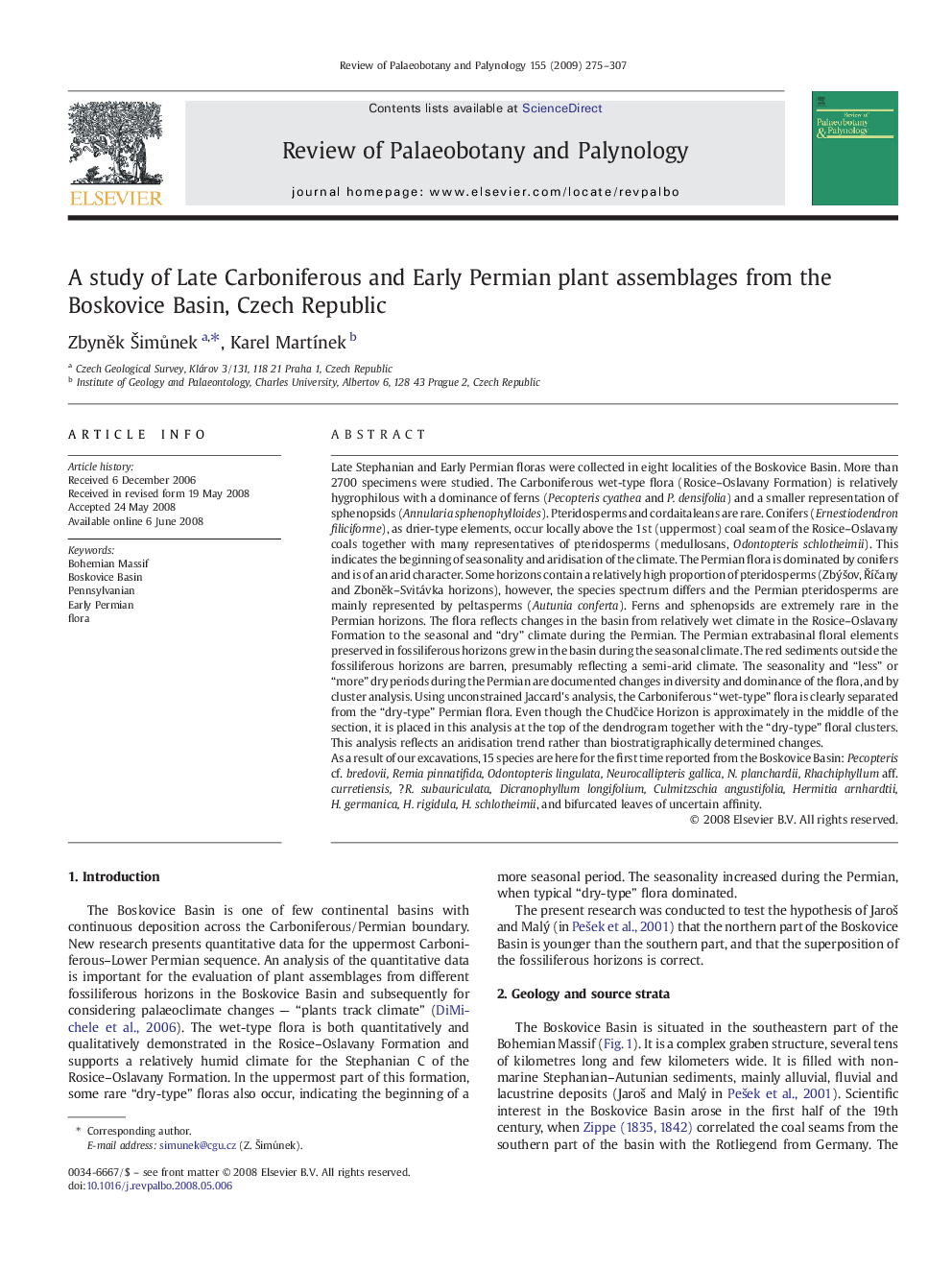| Article ID | Journal | Published Year | Pages | File Type |
|---|---|---|---|---|
| 4751030 | Review of Palaeobotany and Palynology | 2009 | 33 Pages |
Late Stephanian and Early Permian floras were collected in eight localities of the Boskovice Basin. More than 2700 specimens were studied. The Carboniferous wet-type flora (Rosice–Oslavany Formation) is relatively hygrophilous with a dominance of ferns (Pecopteris cyathea and P. densifolia) and a smaller representation of sphenopsids (Annularia sphenophylloides). Pteridosperms and cordaitaleans are rare. Conifers (Ernestiodendron filiciforme), as drier-type elements, occur locally above the 1st (uppermost) coal seam of the Rosice–Oslavany coals together with many representatives of pteridosperms (medullosans, Odontopteris schlotheimii). This indicates the beginning of seasonality and aridisation of the climate. The Permian flora is dominated by conifers and is of an arid character. Some horizons contain a relatively high proportion of pteridosperms (Zbýšov, Říčany and Zboněk–Svitávka horizons), however, the species spectrum differs and the Permian pteridosperms are mainly represented by peltasperms (Autunia conferta). Ferns and sphenopsids are extremely rare in the Permian horizons. The flora reflects changes in the basin from relatively wet climate in the Rosice–Oslavany Formation to the seasonal and “dry” climate during the Permian. The Permian extrabasinal floral elements preserved in fossiliferous horizons grew in the basin during the seasonal climate. The red sediments outside the fossiliferous horizons are barren, presumably reflecting a semi-arid climate. The seasonality and “less” or “more” dry periods during the Permian are documented changes in diversity and dominance of the flora, and by cluster analysis. Using unconstrained Jaccard's analysis, the Carboniferous “wet-type” flora is clearly separated from the “dry-type” Permian flora. Even though the Chudčice Horizon is approximately in the middle of the section, it is placed in this analysis at the top of the dendrogram together with the “dry-type” floral clusters. This analysis reflects an aridisation trend rather than biostratigraphically determined changes.As a result of our excavations, 15 species are here for the first time reported from the Boskovice Basin: Pecopteris cf. bredovii, Remia pinnatifida, Odontopteris lingulata, Neurocallipteris gallica, N. planchardii, Rhachiphyllum aff. curretiensis, ?R. subauriculata, Dicranophyllum longifolium, Culmitzschia angustifolia, Hermitia arnhardtii, H. germanica, H. rigidula, H. schlotheimii, and bifurcated leaves of uncertain affinity.
